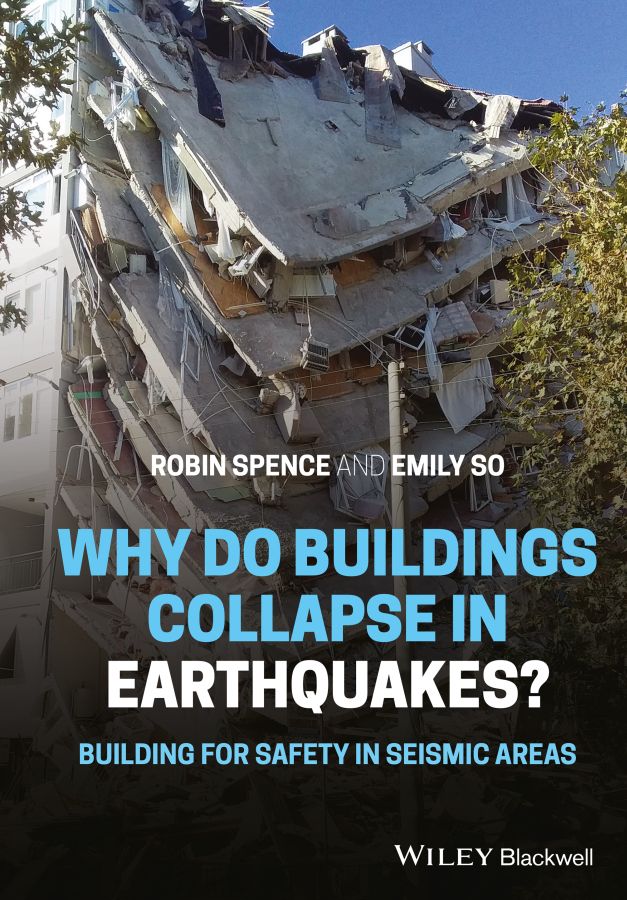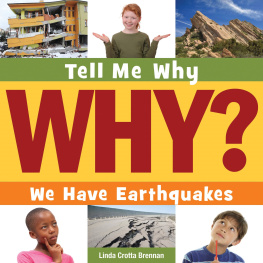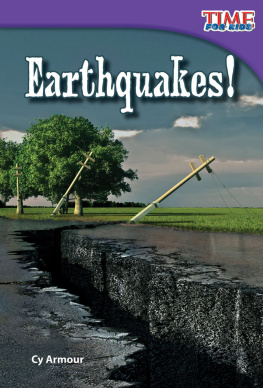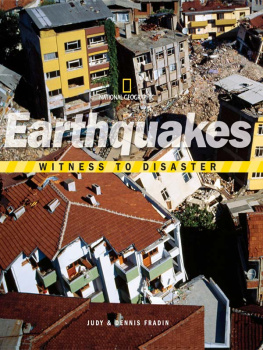
Table of Contents
List of Tables
- Chapter 2
- Chapter 3
- Chapter 5
- Chapter 6
- Chapter 7
- Chapter 9
List of Illustrations
- Chapter 2
- Chapter 3
- Chapter 4
- Chapter 5
- Chapter 6
- Chapter 7
- Chapter 8
- Chapter 9
Guide
Pages
Why Do Buildings Collapse in Earthquakes?
Building for Safety in Seismic Areas
Robin Spence
Emeritus Professor of Architectural Engineering and Fellow of Magdalene College, University of Cambridge, United Kingdom
Director, Cambridge Architectural Research Ltd, United Kingdom
Emily So
Reader in Architectural Engineering and Fellow of Magdalene College,University of Cambridge, United Kingdom
Director, Cambridge Architectural Research Ltd, United Kingdom

his edition first published 2021
2021 John Wiley & Sons Ltd
All rights reserved. No part of this publication may be reproduced, stored in a retrieval system, or transmitted, in any form or by any means, electronic, mechanical, photocopying, recording or otherwise, except as permitted by law. Advice on how to obtain permission to reuse material from this title is available at http://www.wiley.com/go/ permissions.
The right of Robin Spence and Emily So to be identified as the authors of this work has been asserted in accordance with law.
Registered Offices
John Wiley & Sons, Inc., 111 River Street, Hoboken, NJ 07030, USA
John Wiley & Sons Ltd, The Atrium, Southern Gate, Chichester, West Sussex, PO19 8SQ, UK
Editorial Office
9600 Garsington Road, Oxford, OX4 2DQ, UK
For details of our global editorial offices, customer services, and more information about Wiley products visit us at www.wiley.com.
Wiley also publishes its books in a variety of electronic formats and by printondemand. Some content that appears in standard print versions of this book may not be available in other formats.
Limit of Liability/Disclaimer of Warranty
In view of ongoing research, equipment modifications, changes in governmental regulations, and the constant flow of information relating to the use of experimental reagents, equipment, and devices, the reader is urged to review and evaluate the information provided in the package insert or instructions for each chemical, piece of equipment, reagent, or device for, among other things, any changes in the instructions or indication of usage and for added warnings and precautions. While the publisher and author have used their best efforts in preparing this work, they make no representations or warranties with respect to the accuracy or completeness of the contents of this work and specifically disclaim all warranties, including without limitation any implied warranties of merchantability or fitness fora particular purpose. No warranty may be created or extended by sales representatives, written sales materials or promotional statements for this work. The fact that an organization, website, or product is referred to in this work as a citation and/or potential source of further information does not mean that the publisher and author endorse the information or services the organization, website, or product may provide or recommendations it may make. This work is sold with the understanding that the publisher is not engaged in rendering professional services. The advice and strategies contained herein may not be suitable for your situation. You should consult with a specialist where appropriate. Further, readers should be aware that websites listed in this work may have changed or disappeared between when this work was written and when it is read. Neither the publisher nor author shall be liable for any loss of profit or any other commercial damages, including but not limited to special, incidental, consequential, or other damages.
Library of Congress CataloginginPublication data
Names: Spence, R. J. S. (Robin J. S.), author. | So, Emily, (K. M.), author.
Title: Why do buildings collapse in earthquakes? : building for safety in seismic areas / Robin Spence and Emily So.
Description: Hoboken, NJ : WileyBlackwell, 2021.
Identifiers: LCCN 2020053851 (print) | LCCN 2020053852 (ebook) | ISBN 9781119619420 (hardback) | ISBN 9781119619451 (adobe pdf) | ISBN 9781119619468 (epub)
Subjects: LCSH: BuildingsEarthquake effects. | Earthquake resistant design.
Classification: LCC TH1095 .S65 2021 (print) | LCC TH1095 (ebook) | DDC 693.8/52dc23
LC record available at https://lccn.loc.gov/2020053851
LC ebook record available at https://lccn.loc.gov/2020053852
Cover Design: Wiley
Cover Image: Professor Mauricio Beltran
Acknowledgements
We have been generously supported in the preparation of this book by many friends and colleagues, who have read and commented on parts of the text, provided suggestions and illustrations and have been a valuable source of ideas and inspiration over many years.
We would like first to thank Yutaka Ohta whose dedication to earthquake risk reduction and foresight has been a constant motivation to us both. We would also like to acknowledge the late Laurie Baker and the late Paul Oliver, whose understanding of vernacular architecture and its value has been an inspiration for us.
In the preparation of this book, we greatly appreciate the comments and advice on particular chapters from Andrew Coburn, Antonios Pomonis, Svetlana Brzev, Edmund Booth, Mary Comerio and Rashmin Gunasekera.
We appreciate also the cooperation of Rajendra and Rupal Desai, Amod Dixit, Lucy Jones Toshitaka Katada, Randolph Langenbach, Tracy Monk and Edward Ng in reviewing our profiles of them and their work.
We thank our colleagues Hannah Baker and Weifeng Victoria Lee for help in the preparation of maps and diagrams used, as well as for reviewing parts of the manuscript, Yue Zhu for her help with preparation of a number of the images used, and Sandra MartinezCuevas for supplying the diagram of fragility curves used in , based on her analysis of the Cambridge Earthquake Impact Database (CEQID).
We especially appreciate the painstaking work of Charlotte Airey in developing the building construction type and damage mode drawings used in .
We also greatly appreciate the contributions made by the global panel of experts who responded to the surveys of national successes and failures reported in . An acknowledgement to them is given at the end of that chapter. We would like to acknowledge the help of our colleagues at EEFIT, to Allan Brereton and the committee for their help in making available appropriate illustrations. And to our colleagues at Cambridge Architectural Research and the Department of Architecture at the University of Cambridge for their support of the book.
Finally, we would like to express our personal thanks to our families. From Emily: my gratitude to Alex and Clara for being the perfect lockdown husband and baby during this challenging year. From Robin: my thanks as always to Bridget for her unfailing support and wise counsel through this, and so many projects in the past.
Introduction : Why This Book
1.1 Earthquakes An Underrated Hazard
Earthquakes have been a threat to human habitation throughout history, but until relatively recently, their causes were poorly understood. In the prescientific era, they were commonly ascribed to divine intervention. By the time of the Lisbon earthquake in 1755, there were many who understood that earthquakes had natural causes, but the mechanism remained unexplained, and the supernatural explanation was widely proclaimed, especially from church pulpits (Udias and Lopez Arroyo ), the inhabitants of Messina, destroyed by a massive M7 earthquake in 1908, cried Castigo di Dio (punishment from God).
Next page










